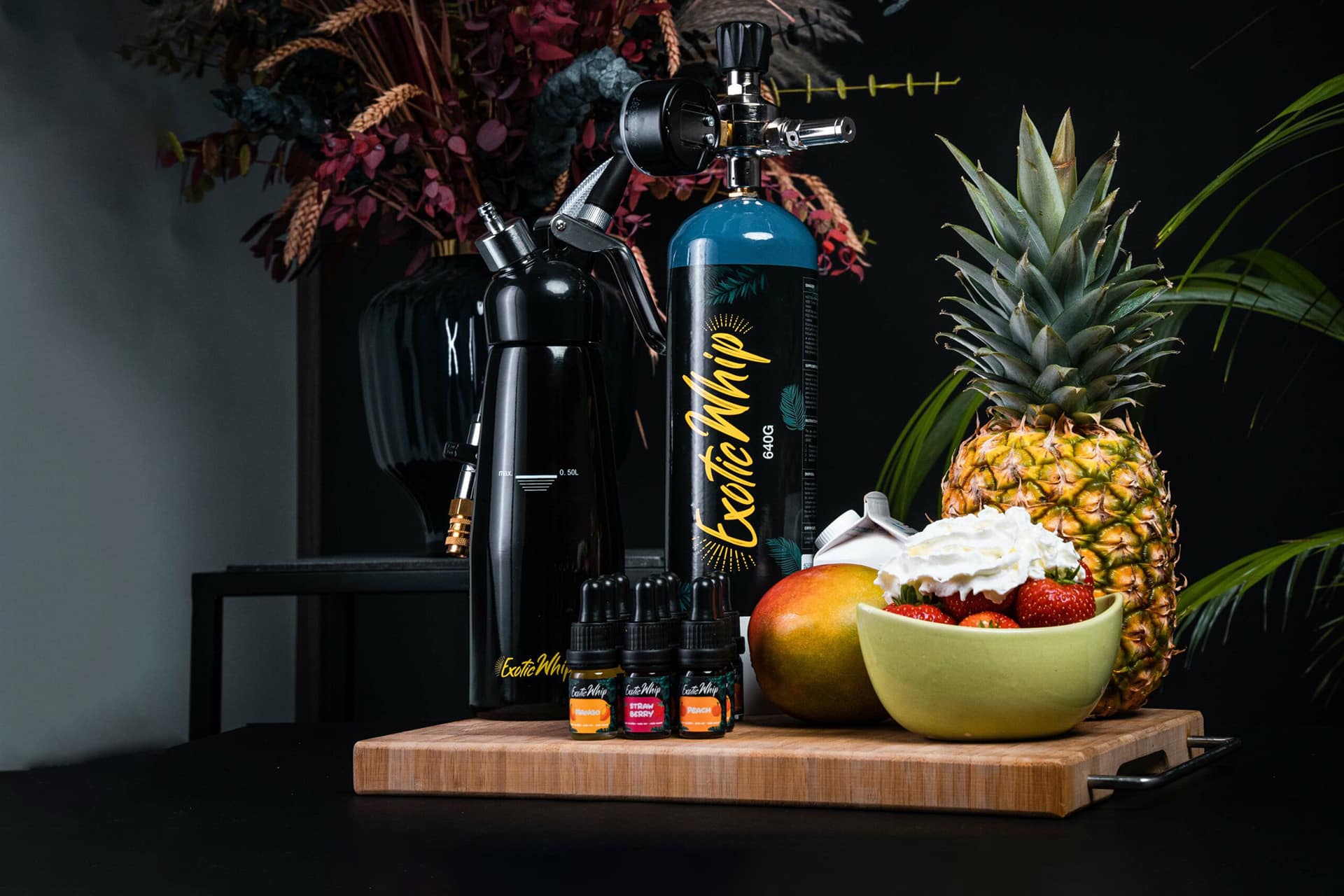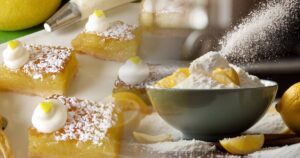5 Unique Ways to Use a Whipping Siphon & Cream Chargers
The Biggest Cream Charger Knowledge Base Online
Fluffy, lightly whipped cream is the first thing that comes to the mind of most culinary enthusiasts whenever they think of a cream whipper. However, if you follow our posts and are knowledgeable about molecular cuisine, you should know by now that the magic of a whipping siphon does not end in the preparation of whipped cream.
We teach you 5 Unique Ways to Use a Whipping Siphon together with a Cream Charger in this opportunity.
Shop Products

What is a Whipping Siphon?
A whipping siphon, also called a ‘cream whipper,’ a ‘cream siphon, ‘siphon,’ or just ‘cream dispenser,’ is a kitchen utensil that uses pressurized gas (N2O) to create whipped cream, infusions, foams, cold brew coffee, or any other culinary delight. High-end cream siphons, for instance, have three main applications: foaming, carbonating, and rapid infusion—even the possibility of making flavorful bitters for your cocktails.
A whipping siphon is, without a doubt, a lovely appliance that highlights the best of molecular gastronomy. It enhances all physical and chemical aspects of food and liquid interactions.
Also, as its most basic, a whipping siphon is naturally a metal or stainless steel container that aerates cream with a high-fat percentage.
Click here to discover How Do Whipping Siphons work.
Nitrous Oxide Cartridges and Whipping Siphons
Before indicating the 5 Unique Ways to Use a Whipping Siphon and a Cream Charger, you must understand the role of nitrous oxide (N2O) in the game.
Nitrous oxide, or N2O, as people colloquially know it, is primarily a gas manufactured from the heating of ammonium nitrate, a process from which food-grade nitrous oxide results. This gas acts as a propellant (fuel) or a whipping agent in a whipped cream dispenser; this is to say, it aerates the mix poured into the siphon.
You can find it in cream chargers or cylinders in the market, like ExoticWhip 640gr. Both forms are suitable to use with a cream siphon.
Good to know: Nitrous oxide dissolves much better in fat than in water, so high-fat liquids generally foam better in a siphon than low-fat ones do.
Now that you are clear on these two terms: nitrous oxide and whipping siphon, we can list the 5 Unique Ways to Use a Whipping Siphon and a Cream Charger.
Whipping Siphon – 5 Ways to Use it in Your Kitchen
You might be thinking that a whipping siphon is a tool beyond your abilities. But that’s not true, or not entirely true. Even though a cream whipper is the main utensil in upscale restaurants, its use has become prevalent in the last few years. Many amateurs want to try it is magic, and we understand why!. Don’t be afraid of having some fun! Here are a few examples of its tremendous potential:
Hollandaise Sauce
If you ever had a hollandaise sauce at a restaurant and wondered how they made it so light, you know the answer: a whipping siphon. To achieve a fluffy texture, you can put any flavoring in a whipping siphon and aerate it. Doing so will also make the sauce go further and reduce calories (by adding air) without any sense of deprivation. Here’s a recipe from the ISI website for whipping siphon hollandaise sauce.
Marinating
This process takes a lot of time, but a cream siphon makes it easier and faster and even adds flavor to the marinate. You will need to pour the marinade inside the whipping siphon, charge the dispenser, use a special injector tip to puncture your preferred protein parts, and that’s all! A slice of juicy meat is waiting for you!
Foams
This preparation is massive in modernist restaurants. Foams add flavor, texture, and a nice touch to your plates, aesthetically speaking. The three most known types are cream foams, Agar, and gelatin. This last is probably the most famous. To make a gelatin foam, first hydrate the gelatin and then disperse it into the liquid you want to foam. Pour the mixture into the whipping siphon and refrigerate it for several hours so the gelatin can sit before dispensing it. Powdered gelatin in a 0.4% to 1.0% ratio for light foams works well.
Infusing flavors
An infusion is, in simple words, the resultant liquid from the extraction of plant material exposed to a solvent such as water, oil, or alcohol. It is an easy technique that comes in handy when you want to get the best flavor out of a natural source. Bitters (herbs and spices steeped in liquid solvent) are an excellent example of a rapid infusion. You do not need a siphon to make this kind of infusion, but they make the process go a lot faster when the pressure inside the siphon forces the flavors to meld more quickly. Here’s a recipe for Orange Bitters from the ISI website to get you started. Be sure to also check out our guide on how to make Whip Shots at home!
Making carbonated fruit & drinks
If used creatively, a cream whipper can help you create myriad surprises and dramatic effects in the bar. To make carbonated fruit, we start by putting berries in the siphon -you can choose another fruit – and pressurize it with a couple of carbon dioxide cartridges. Attention: We do not use nitrous oxide chargers in this process!
Let it sit for a couple of minutes, pour the fruit into serving bowls, and voila: fizzy fruit. Your guests will be thanking your great hospitality later!
Feel free to sweeten your infusion. Berries are the easiest, but you can carbonate grapes, citrus fruit, kiwi, and many others. You can even carbonate celery–it makes a fantastic garnish for a Bloody Mary.
In this video, you can see how to make fizzy fruit with a siphon.
Extra tip: add this carbonated fruit to your favorite cocktail. You can even prepare carbonated drinks if so you prefer.
At the end of this guide, we hope you are now willing to try new things and dive into the specialties that offer a whipping siphon. Please also feel free to view our blog posts for further information.
Are you planning to try also some N2O cream chargers? Visit our product page for more information. ExoticWhip sells both the cream siphon and press regulator.




